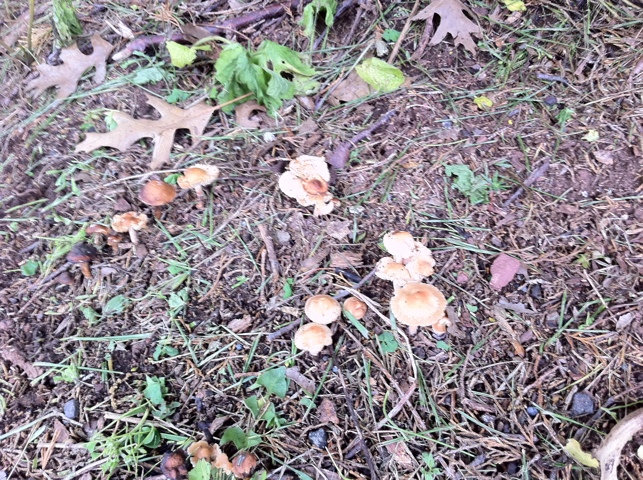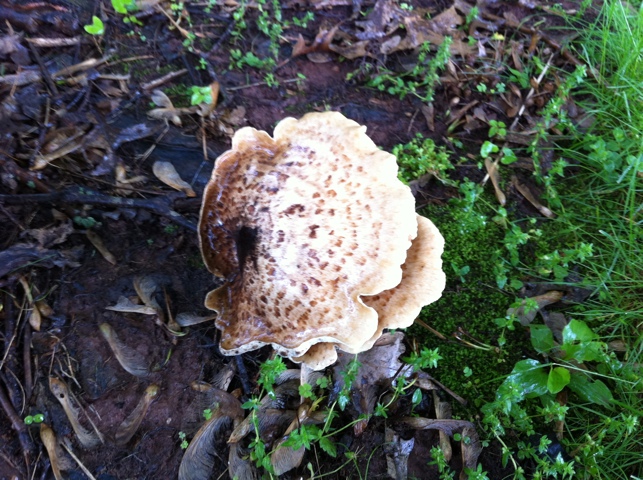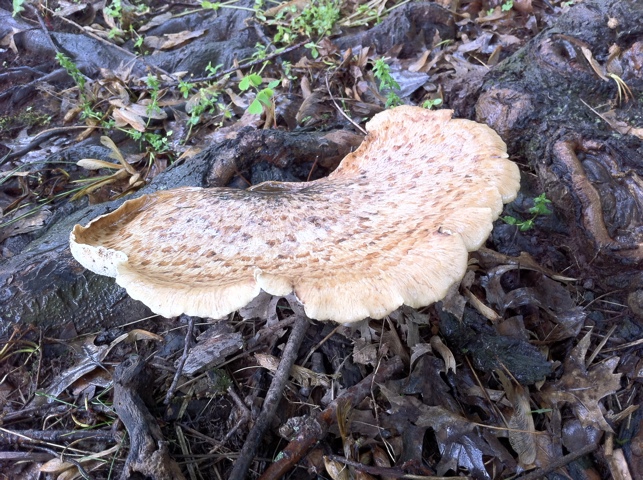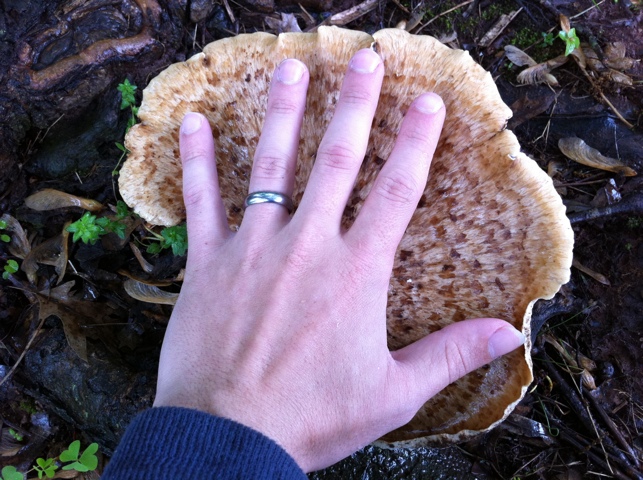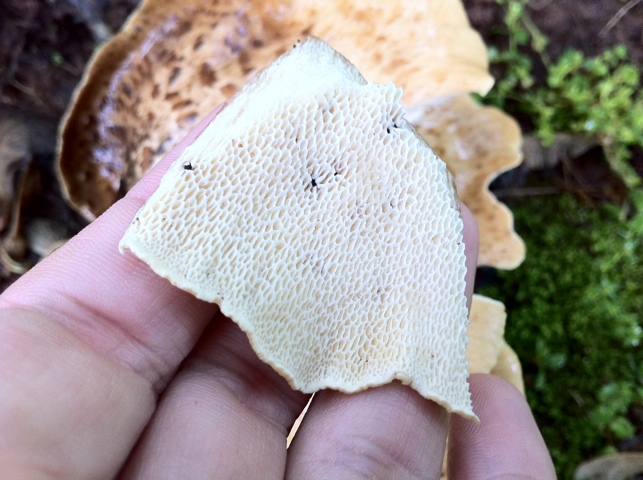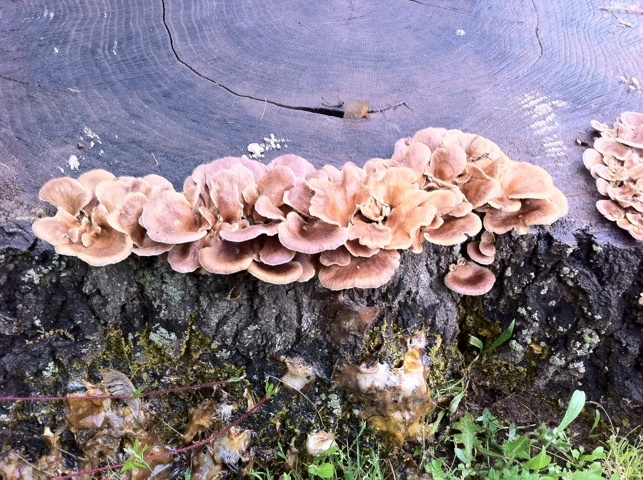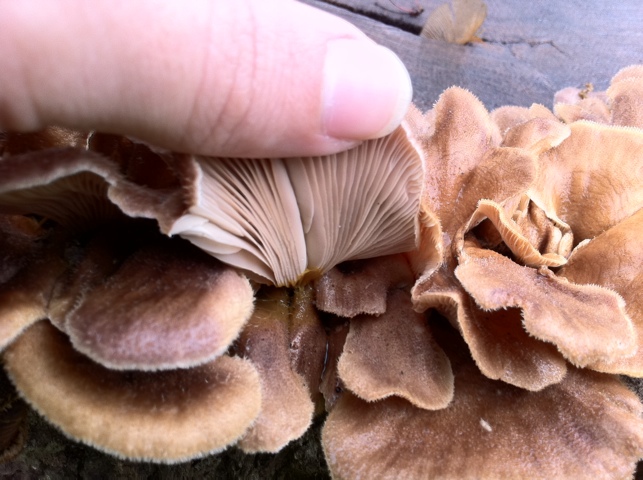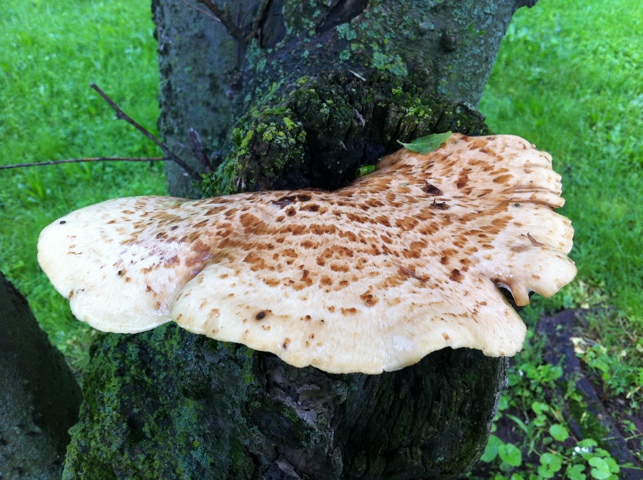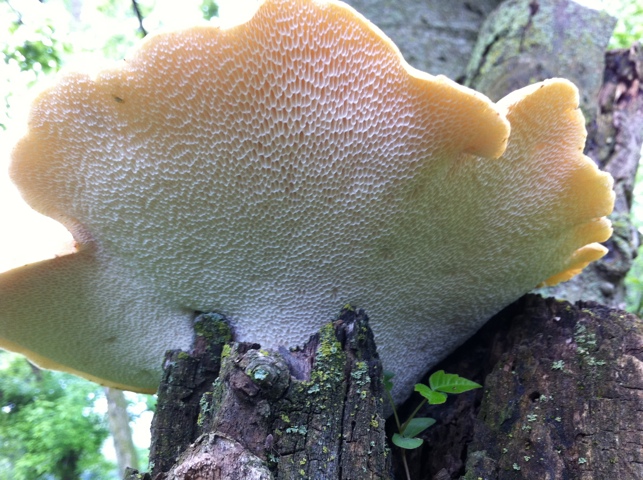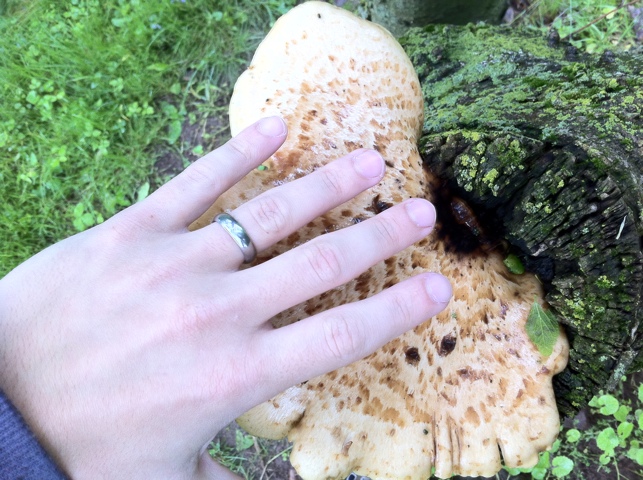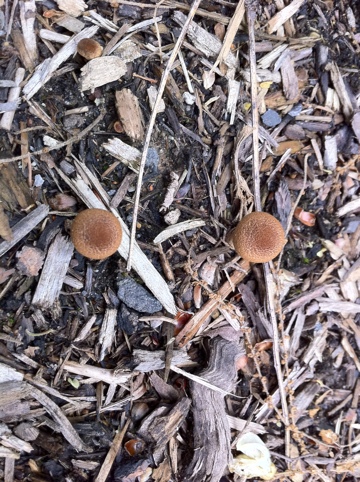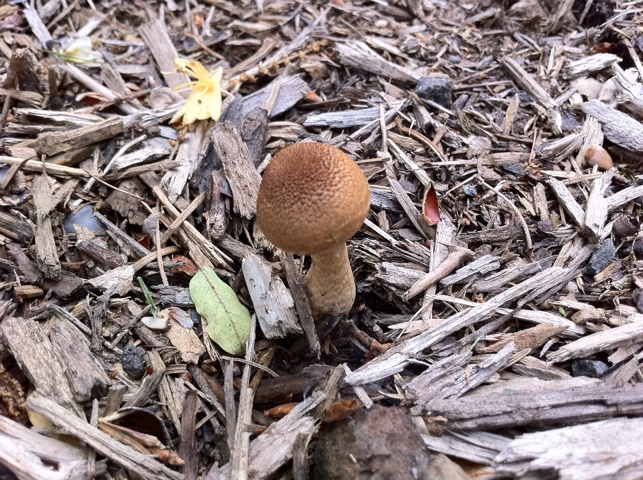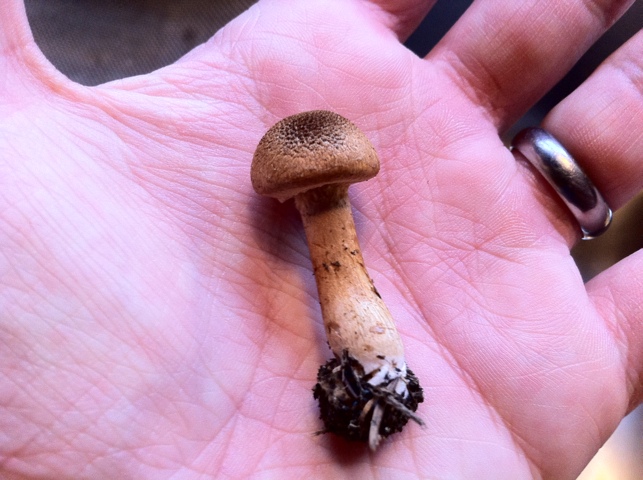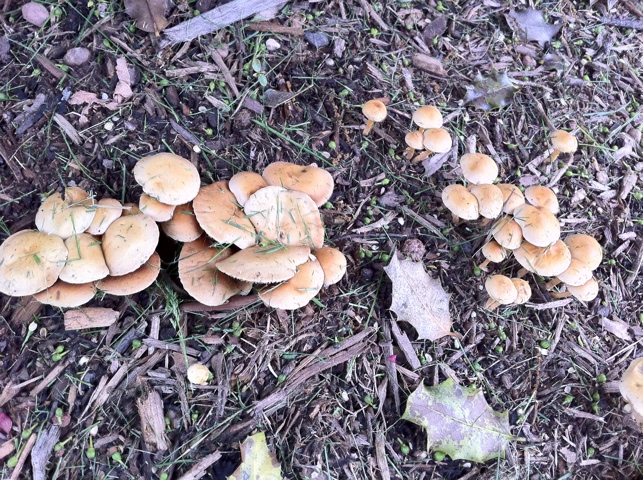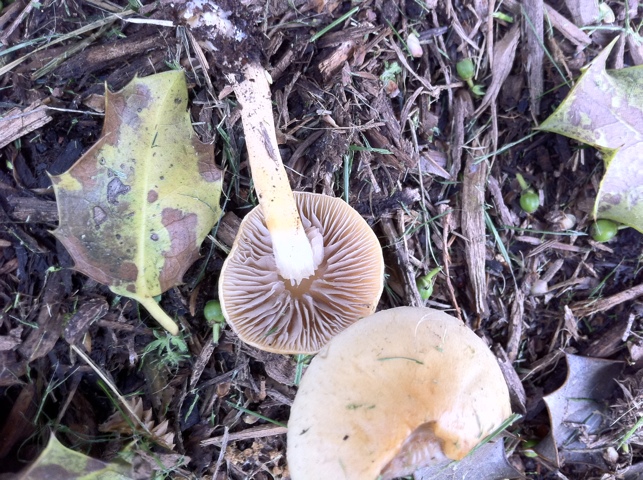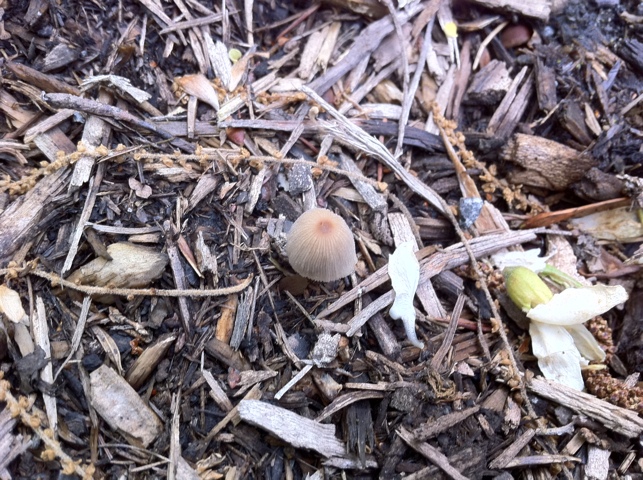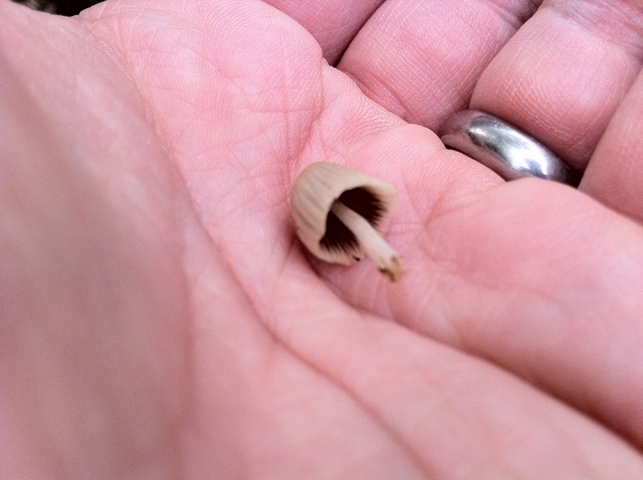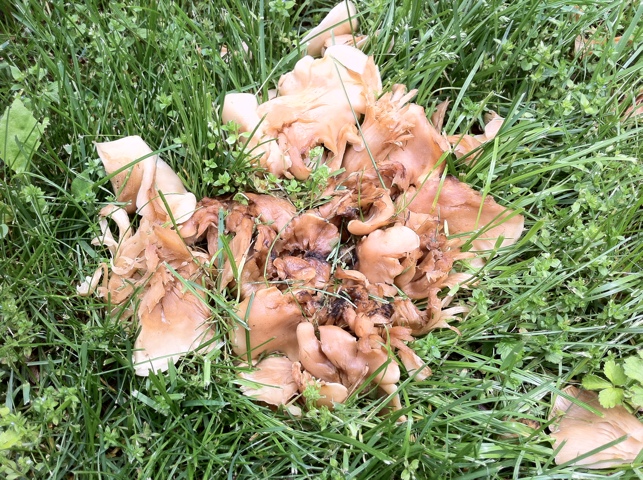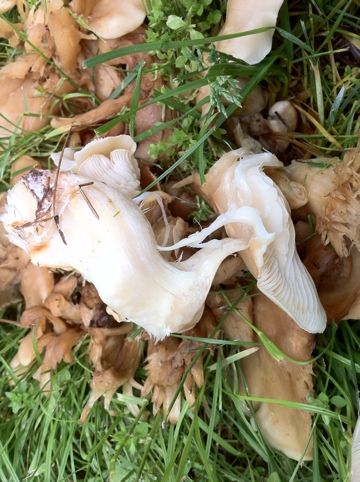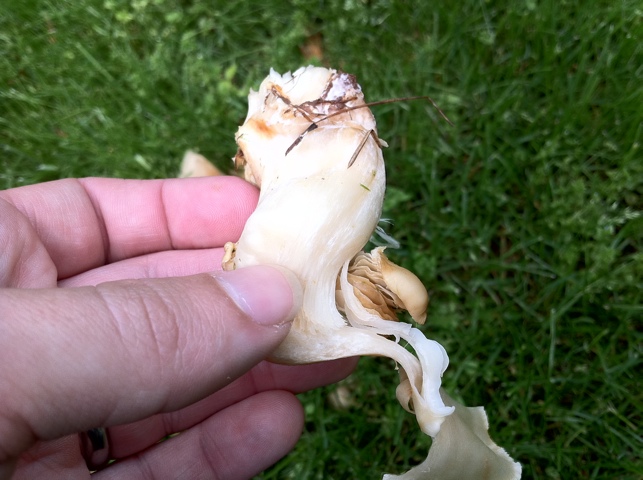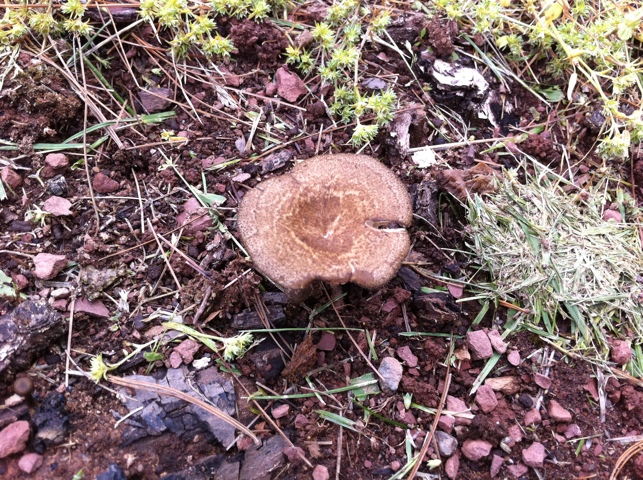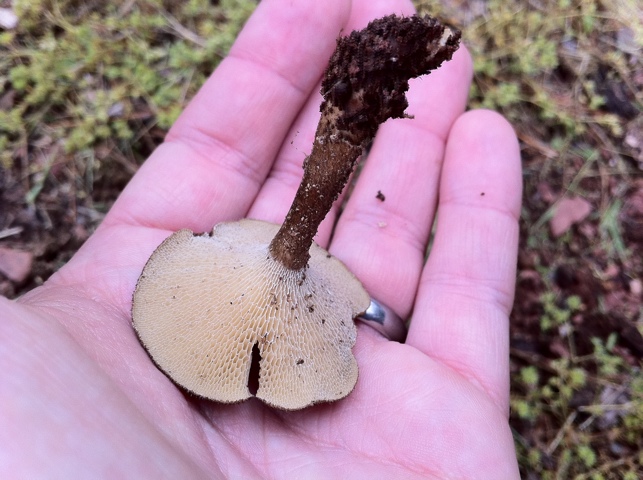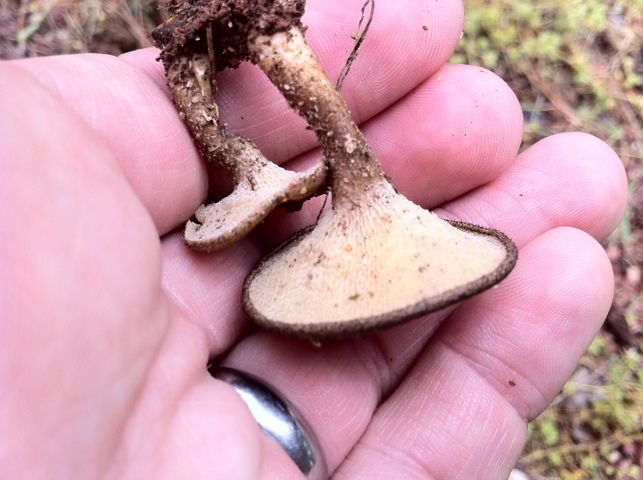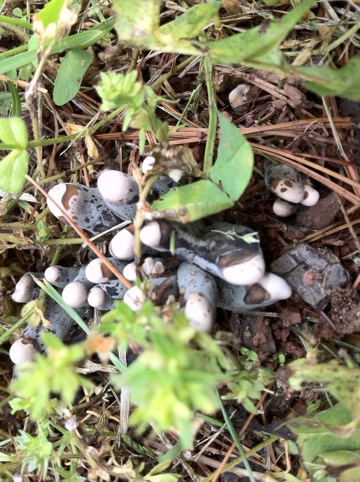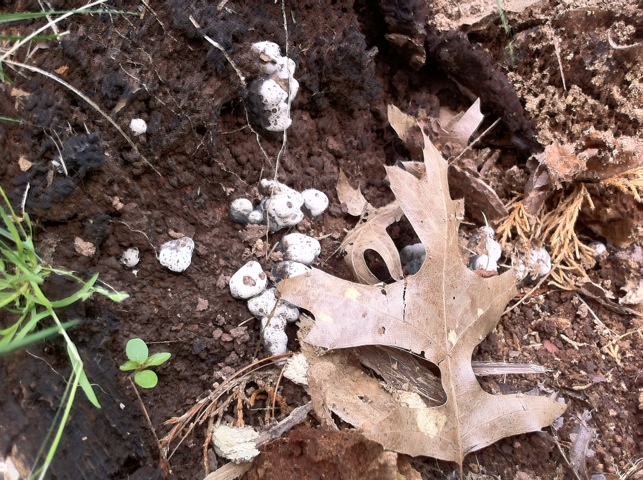#3 Three more Dryad’s Saddles
#2 Unidentified
From a distance it looked like a nice cluster of Pleurotus, but up and close I found they were fuzzy and tough. With white gills and yellow-white spores (P. ostreatus and friends have lilac spores), my best guess is Panus rudis.
UPDATE: These cannot be P. rudis, as they have forked gills and a bright yellow spore print. Back to the drawing board…
#1 Fresh Dryad Saddle
So fresh it made the whole car smell like watermelon (one of the odd quirks of this species of mushroom, although it certainly doesn’t taste like watermelon, or smell like watermelon after it’s cooked).
This one might be for sale on the upcoming RogueLeaf Fungorium. More soon about that. 🙂
In the meantime, if you’d like to purchase this specimen, email in to RogueLeaf •at• gmail •dot• com.
FDA Food Code 3-201.16 Wild Mushroom Buyer Specification:
- Name & Author: Polyporus squamosus (Huds.) Fr. – “Dryad’s Saddle” “Pheasant Back”
- Fresh Identification: This mushroom was identified in a fresh state.
- Name of Identifier: Steve Caruso
- Identifier Qualifications: Active amateur mycologist 5+ years.
Further information:
- Mushroom edibility tested.
- No mushrooms in this family are known to be toxic.
- P. squamosus is a good “carrier” mushroom for other flavors as it does not have a very strong flavor, itself.
- This specimen is very young and tender.
- Like most polypores, the edges are the most tender portion of this mushroom and are best suited for eating, where the inner portions can sometimes get a little tough and are best suited for making broths.
- If not sold within 1 week’s time from this posting, it will be dehydrated and offered for sale dried.
